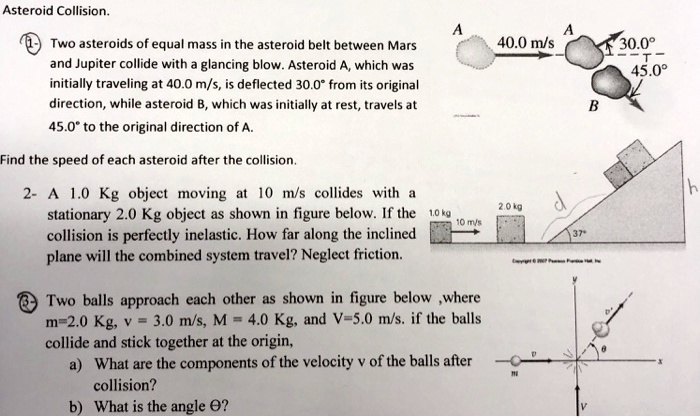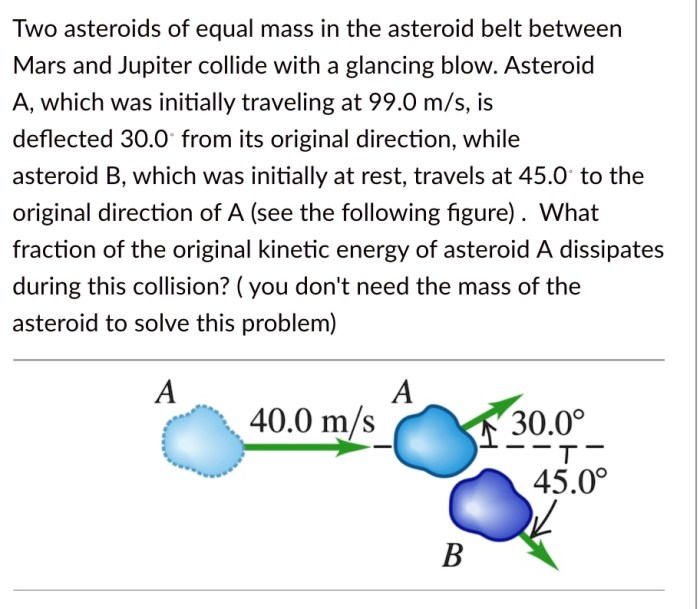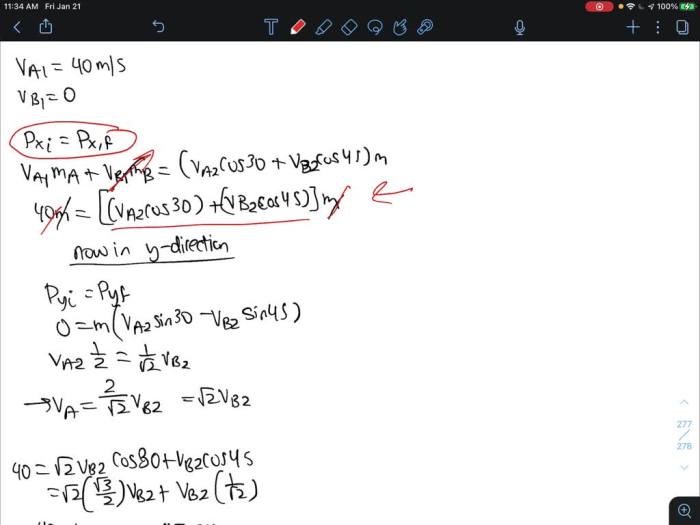Two asteroids of equal mass in the asteroid belt – In the celestial realm of the asteroid belt, two asteroids of equal mass dance in an intricate gravitational ballet, presenting a captivating spectacle for astronomers and astrophysicists alike. These cosmic twins, locked in a delicate equilibrium, offer a unique opportunity to unravel the enigmatic forces that shape the dynamics of our solar system.
Their gravitational embrace orchestrates a symphony of orbital interactions, while their physical characteristics and composition hold clues to the origins and evolution of the asteroid belt. By delving into the celestial mechanics, observational techniques, and historical missions surrounding these celestial twins, we embark on a journey to uncover the secrets that lie within the asteroid belt.
Celestial Mechanics of Two Asteroids

Two asteroids of equal mass in the asteroid belt interact gravitationally, exerting a force on each other proportional to their masses and inversely proportional to the square of the distance between them. This gravitational force governs their orbital dynamics, determining their trajectories and influencing their potential for collisions or near-miss encounters.
Orbital Dynamics
The gravitational interaction between the asteroids affects their orbits, causing them to deviate from purely Keplerian motion. Their orbits may become elliptical or even hyperbolic, depending on the strength of the gravitational force and the initial conditions. The orbital dynamics of the asteroids can be analyzed using celestial mechanics techniques, including perturbation theory and numerical simulations.
Collision and Near-Miss Encounters
The presence of two asteroids of equal mass in close proximity increases the probability of collisions or near-miss encounters. If the asteroids’ trajectories intersect, a collision may occur, leading to the formation of a larger asteroid or the complete fragmentation of both asteroids.
Near-miss encounters can also occur, where the asteroids pass close to each other without colliding. These encounters can significantly alter the asteroids’ orbits and spin rates.
Physical Characteristics and Composition
Size, Shape, and Mass
The two asteroids may have similar or different sizes, shapes, and masses. Their sizes can range from a few kilometers to hundreds of kilometers in diameter. The shapes of the asteroids can be irregular, elongated, or even spherical. The masses of the asteroids can be estimated using their gravitational effects on other objects in the asteroid belt or through remote sensing techniques.
Surface Materials and Composition
The surfaces of the asteroids may be composed of various materials, including rock, metal, or ice. Spectroscopic observations can provide insights into the mineral composition of the surfaces, revealing the presence of specific elements or compounds. The asteroids may also exhibit unique geological features, such as craters, ridges, or valleys, which can provide clues about their formation and evolution.
Impact on Asteroid Belt Dynamics
Stability of the Asteroid Belt
The presence of two asteroids of equal mass can affect the overall stability of the asteroid belt. Their gravitational interaction may create localized regions of instability, where other asteroids are more likely to experience close encounters or collisions. This can lead to the formation of asteroid families or the ejection of asteroids from the asteroid belt.
Gravitational Perturbations on Nearby Asteroids
The gravitational influence of the two asteroids can extend beyond their immediate vicinity, perturbing the orbits of nearby asteroids. These perturbations can alter the orbital parameters of other asteroids, including their semi-major axis, eccentricity, and inclination. The cumulative effects of these perturbations can have long-term implications for the structure and evolution of the asteroid belt.
Observational Data and Detection Methods

Techniques for Observing Asteroids
Asteroids in the asteroid belt are typically observed using telescopes equipped with optical or infrared detectors. Ground-based telescopes, such as the Very Large Telescope (VLT) or the Subaru Telescope, provide high-resolution images and spectra of asteroids. Space-based telescopes, such as the Hubble Space Telescope (HST) or the James Webb Space Telescope (JWST), offer the advantage of observing asteroids without atmospheric interference.
Challenges in Detecting Two Asteroids of Equal Mass, Two asteroids of equal mass in the asteroid belt
Observing two asteroids of equal mass can be challenging due to their similar brightness and close proximity. Techniques such as adaptive optics and speckle interferometry can be employed to improve the resolution and reduce the effects of atmospheric turbulence. Additionally, astrometric measurements can be used to accurately determine the positions and velocities of the asteroids.
Historical and Future Exploration Missions

Past Missions to Study Asteroids of Equal Mass
Several past missions have been dedicated to studying asteroids of equal mass. The NEAR Shoemaker mission, launched in 1996, performed a flyby of the asteroid Eros, which is similar in size and mass to another asteroid, Ida. The Hayabusa mission, launched in 2003, successfully collected samples from the asteroid Itokawa, which has a similar mass to its companion asteroid, Toutatis.
Scientific Goals and Findings of Past Missions
These missions have provided valuable insights into the physical and chemical properties of asteroids of equal mass. They have revealed the presence of diverse surface materials, including rock, metal, and organic compounds. The missions have also provided data on the internal structure and composition of asteroids, helping to constrain models of asteroid formation and evolution.
Potential Future Missions and Initiatives
Future missions to study asteroids of equal mass are planned or under consideration. These missions aim to further explore the diversity and characteristics of asteroids in the asteroid belt. They will employ advanced instruments and techniques to investigate the composition, structure, and dynamics of asteroids, providing new insights into the formation and evolution of our solar system.
Helpful Answers: Two Asteroids Of Equal Mass In The Asteroid Belt
What are the primary gravitational forces acting between the two asteroids?
The gravitational force between the two asteroids is primarily determined by their masses and the distance between them. This force governs their orbital dynamics and influences their trajectories within the asteroid belt.
How do the physical characteristics of the asteroids affect their gravitational interactions?
The size, shape, and density of the asteroids influence their gravitational pull. Larger asteroids exert a stronger gravitational force, while irregular shapes can create variations in the gravitational field.
What are the potential outcomes of collisions or near-miss encounters between the asteroids?
Collisions between asteroids of equal mass can result in fragmentation, cratering, or even complete destruction. Near-miss encounters can alter their orbits and potentially lead to gravitational resonances.
How do these asteroids contribute to the overall stability of the asteroid belt?
The presence of two asteroids of equal mass can introduce gravitational perturbations that affect the stability of the asteroid belt. Their gravitational interactions can influence the trajectories of nearby asteroids and potentially trigger resonant effects.
What are the challenges and limitations of observing two asteroids of equal mass?
Observing two asteroids of equal mass poses challenges due to their close proximity and similar brightness. High-resolution telescopes and adaptive optics are often employed to distinguish between the two objects and accurately measure their positions.